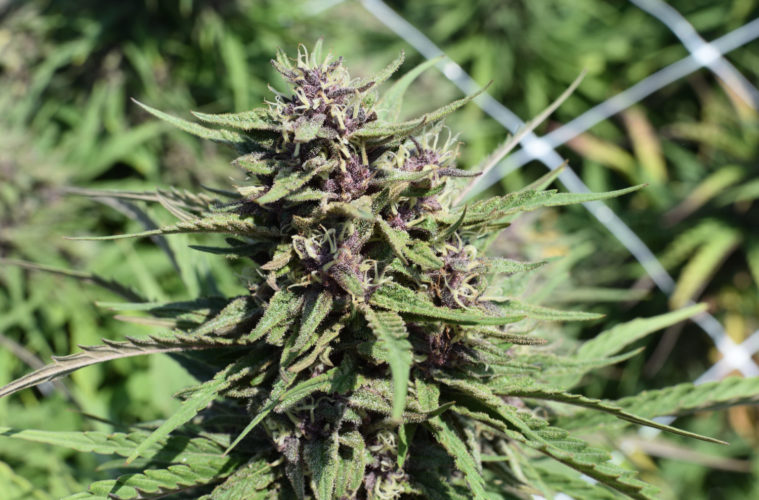In a world where the definition of craft cannabis looks to be getting a bit blurry, the agricultural skillset that former French Laundry farm chef Aaron Keefer brings to Sonoma Hills Farm’s new cannabis effort can only be described as artisan.
For years, Keefer helped cultivate and maintain French Laundry’s three Michelin Stars in the most literal sense. That is, in addition to all the other assorted accolades that give the Yountville restaurant a seat at the table when discussing the best fine dining experiences on the planet. But Keefer was growing pot long before he got into a kitchen for the first time at age 17. Even as he worked to keep French Laundry on top of the culinary world, he was moonlighting as a cannabis provider to some of San Francisco’s OG dispensaries. Keefer also previously worked with Jeremy Fox and the Bouchon Beverly Hills.
When the opportunity came up for Keefer to merge his passions with Sonoma Hills Farm, he jumped at it. Since 2018 he’s worked on the western edge of wine country in hopes of creating an ecosystem to grow the best pot possible, matching the quality of the vegetables he grew, which run a few hundred bucks a plate. These days, Keefer serves officially as Sonoma Hills Farm’s Vice President of Cannabis Cultivation and Operations.
The story in itself is wild, and understandably it picked up a lot of steam in February when the farm put a bit more effort into getting the word out about Keefer’s departure from the famed Thomas Keller Restaurant Group to lead their cannabis operation. But you can only tell so much by word of mouth. So this week we headed north to see the farm with our own eyes. We wanted to experience it away from all the hype, to let the terpenes speak for themselves. And they did- loudly.
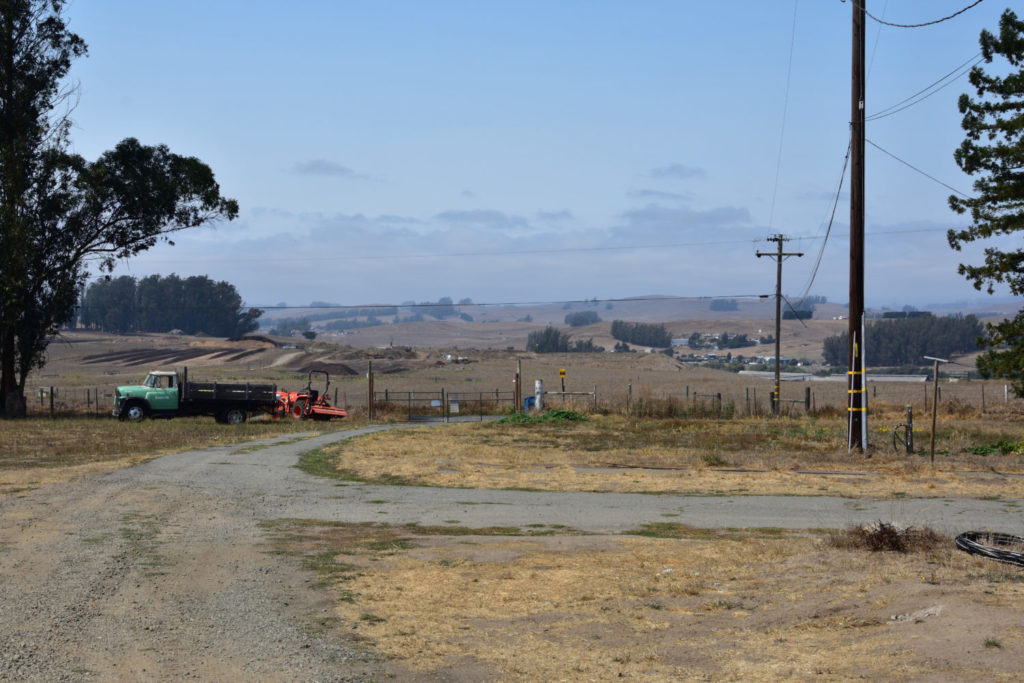
The smoke covered hills of Wine Country.
As we drove up 101 North, the smoke from the ongoing wildfires was thick in spots with a little sting on the eyes but it wouldn’t stay that bad for long. Soon after exiting the highway in Petaluma, things cleared up a bit on the west side of town as we approached the farm in the unincorporated part of the county.
The farm’s co-founder and CEO, Mike Harden, met us at the gate with Farm Supervisor Jake Daigle joining not long after. As we pulled in to find a spot to park, it looked a lot more like a destination for hayrides or picking pumpkins rather than a state-legal cannabis farming operation.
We started our chat while surveying some flowers they were looking at from a recent Compound Genetics pheno hunt. After partaking in some GMO x Starfighter, the conversation moved on to the most obvious concern of the moment for the farm- the thick smokey haze in the sky. While the smoke was thinner in their neck of the woods, they were still losing a lot of the sun’s energy to the haze it produced as the plants enter their home stretch before the harvest.
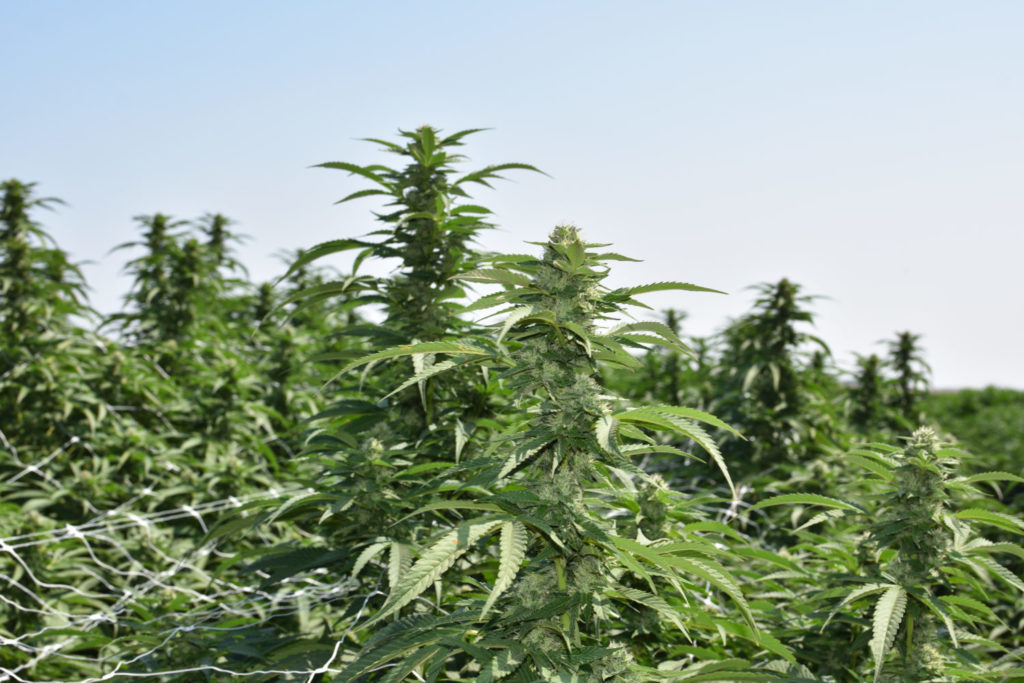
Animal Mints
“I’m just looking at this as the fire season,” Keefer told L.A. Weekly of how extreme the wildfires have gotten in recent years. “Every year we’re gonna have fires. It’s not been too bad. And we huddle around grills, and we huddle around fires all the time, so a little bit of smoke in the air is not gonna kill anybody.”
We asked if he had any concerns about how the plants would respond?
“The plants have been doing fine. There’s been a little bit of ashfall, we haven’t been close enough to anything serious, and truthfully, it’s not like the Paradise Fire where all you smelled was plastic,” Keefer said. “This is all wood and grasses and we aren’t really worried.”
As noted in our recent fire coverage, farmers have a lot more concern about the ashes coming from structure fires than vegetation ones. Vegetation fires are believed to be survivable because you’ll still have a shot to pass testing, but the ashes from structure fires are a different story and are said to contaminate crops.
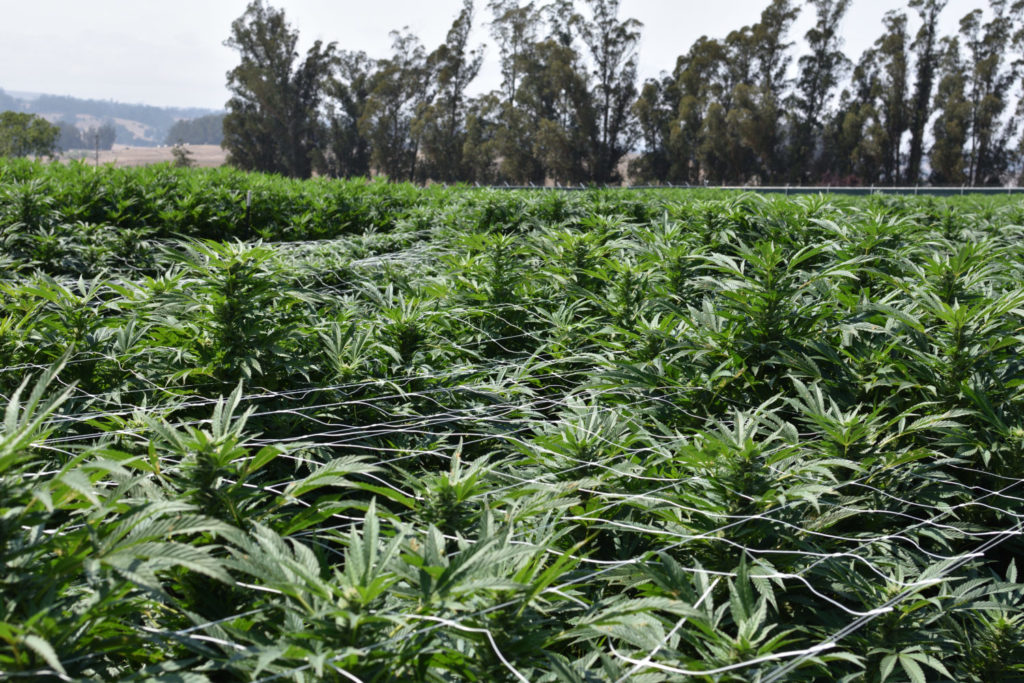
The first view entering the farm.
Keefer explained that the lack of lumens is the biggest problem from everything. “We want all the power from the light to go into the leaves right now, so we’ve been hurt a little bit with that,” he shared. “We’re hoping there isn’t too much impact on the yield, but the plant itself is looking so good that I think we’re gonna be fine.”
Watching agriculture in the region be impacted by ever-worsening wildfires, Keefer, who’s been a farmer in Sonoma for the last decade, seems prepared for anything. “Truthfully, it’s just something you have to plan for,” he said. “You have to keep your crew safe. You have to keep everybody you know protected. But other than that, it’s really like a high heat day, everybody goes home. A day that is very, very cold and rainy, everybody does go home. So, anybody who’s working in that environment would obviously go home if it gets dangerous.”
Before we got to the weed, we went to pick up lunch. We passed rows of fresh parsley, chives, and a variety of Keefer’s other veggies that chefs would kill to get their hands on as he explained the property was some of the first farmland settled in Sonoma County just following the beginning of the Gold Rush in the 1850s. Harden, who drove us on a garden tour, pointed out a house off in the distance as one of the oldest in the county.
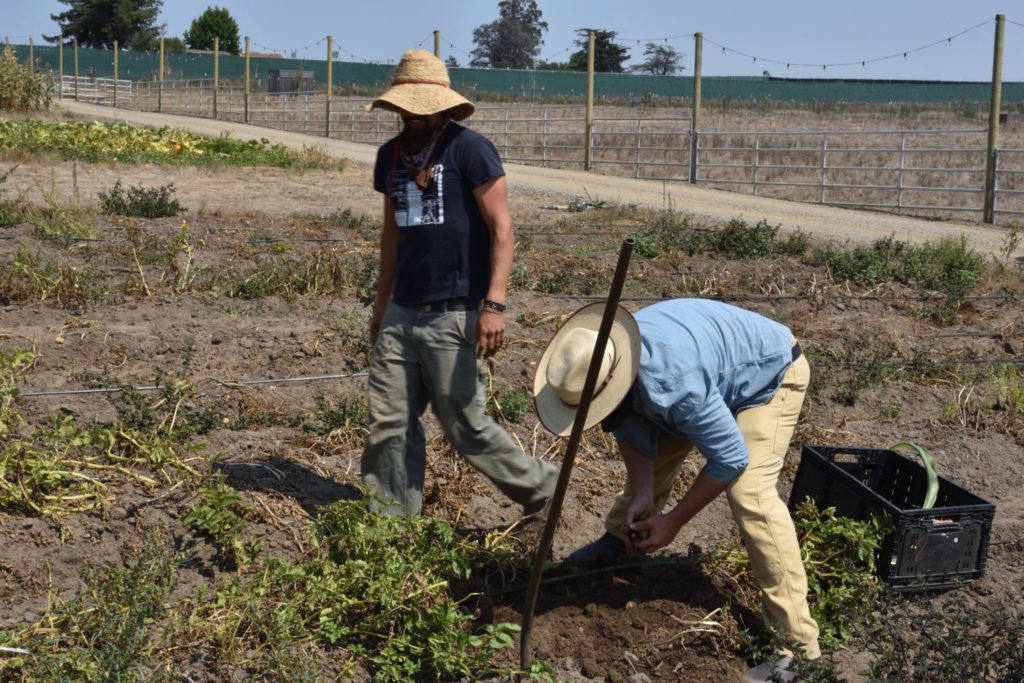
Keefer and Daigle grab fresh potatoes for lunch.
At one point, Daigle flipped over a log and pointed to the fungal growth on the bottom. He called the white residue an example of indigenous microorganisms the farm has been able to gather in their quest to work with the land.
“We’ve collected and we’ve inoculated a bucket of water and cultured it and fermented it for 12 days,” Daigle said. “It’s a Korean natural farming method that you know you’re working with nature; you’re using what’s on the land. You’re anaerobically growing these bacteria out, and so it’s a way to unlock nutrients. You can also put in green leaves and pull nitrogen out of those.”
“It’s really just inoculating the soil with some life and then they’ll go multiply in that soil once you put it in the ground. It’s not really like a nutrition program,” Keefer added.
The farm is currently growing three species of corn they had to plant at different times, so they didn’t cross-pollinate, and as he gathered it, Keefer explained they’d just received approval to start grading the ground for their new greenhouse.
“It’s only going to be 15,000 square feet,” he told us, which sounded small and adorable in the age of super greenhouses. “Yeah, it’s cute but it’s gonna be a Venlo. Like super, super high end.”
Regardless of the greenhouse, the land has a lot going on and this has led to Keefer’s belief that dry farming the property is also possible. They’re yet to pull the trigger, though. “Obviously, as we satellite out, we’re looking to do a lot of dry farming,” he said. “This is great soil for dry farming. We’re sandy loam out here.”
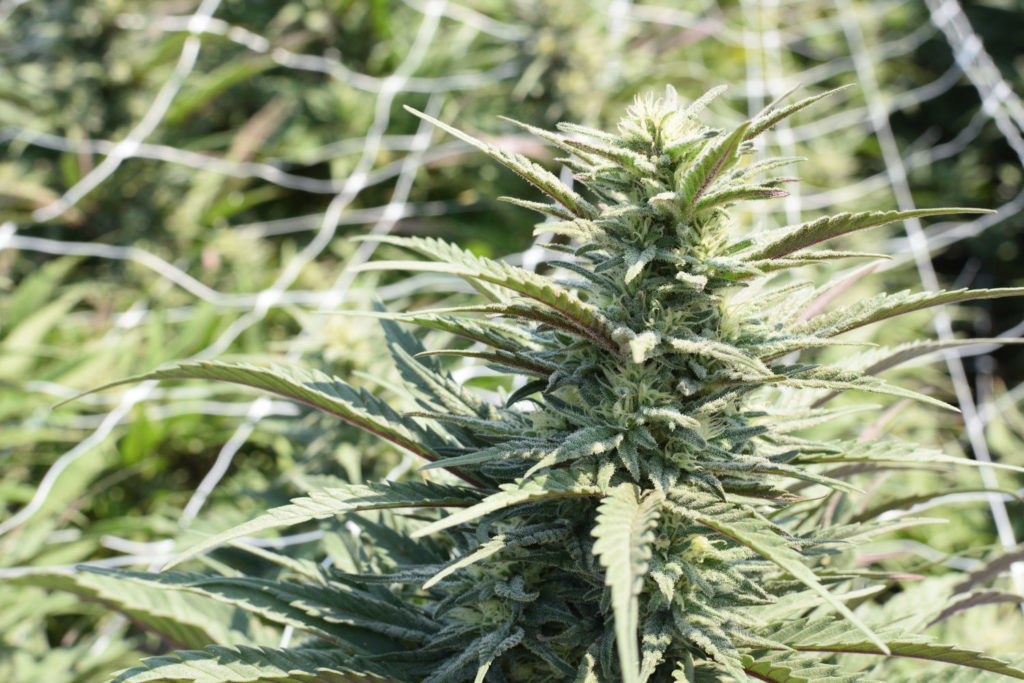
Banana Kush
After we dropped off the veggies, we headed towards the section of the garden we’d made the trip for. Upon entering past the gate, Keefer pointed out a towering Orange Acai. It is one of the 27 strains they’ll be running in total this year. The main offerings include names like Wedding Crasher, GG #4, Animal Mints, Banana Kush, Pink Jesus, Cherry Cheesecake, Spyrock OG, and a Sherbert that’s proving to love the environment. “I know they’re starting to push,” Keefer said of the plant. “We’re probably every bit of three, four weeks away on this at least. So, they should end up pretty nice.”
Though the endeavor is a few years old, the physical plot the cannabis garden is on has only recently been built up to the task. They started growing there in February of this year so it’s really only been a few months. “Nothing was here, not the fence, none of the prep was done. It looked like fields over there,” Keefer showed us. “So it’s been a lot this year, but we’re good next year. We’re gonna have fences of sunflower.”
Since the plants at Sonoma Hills Farm are directly in the ground and not pots, we asked how much time the team had to build up the soil on the new site to give their weed the best shot possible.
“We’re really lucky because we had 30 years of a regenerative kind of grazing going on. All the cows are going through grazing and pooping,” Keefer replied. “So, we were lucky to have almost 18 inches of beautiful topsoil with great microbial action to start with.”
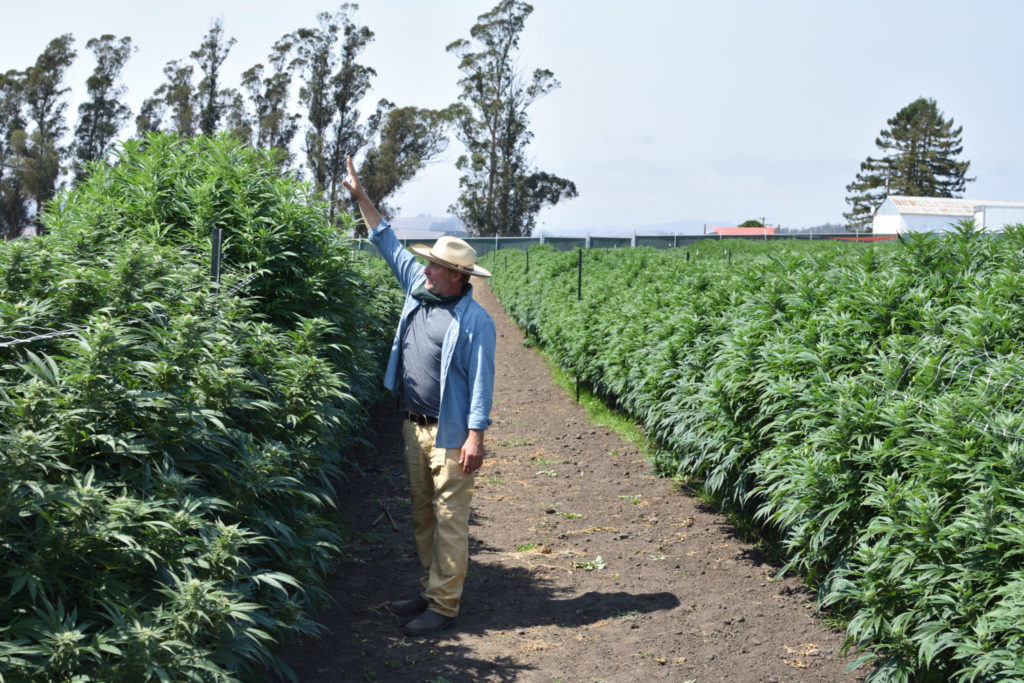
Keefer sizes things up.
From there they added about two and a half miles of irrigation pipe. As we walked through the rows of plants, Keefer noted the Wedding Crasher had come from tissue culture at Node Labs in San Francisco. Tissue culture cuttings are made from the freshest piece of materials on the plant’s meristem, the region of the plant it physically grows from. The plant issue is so new in most cases, pests and diseases impacting the parent plant won’t carry on to the fresh cutting. The tissue culture cuttings proved to grow the most uniform of the crop.
Keefer next showed off the Pink Jesus. One of the crop’s gems, it’s a pairing of Starfighter and Cherry Cheesecake. When the plants are in this part of the growth cycle, you can rub the buds with your fingertips and then smell them to get an idea of what the final product’s scent will be. When we tested this one, it exploded up our nostrils like a smoothie filled with exotic fruit.
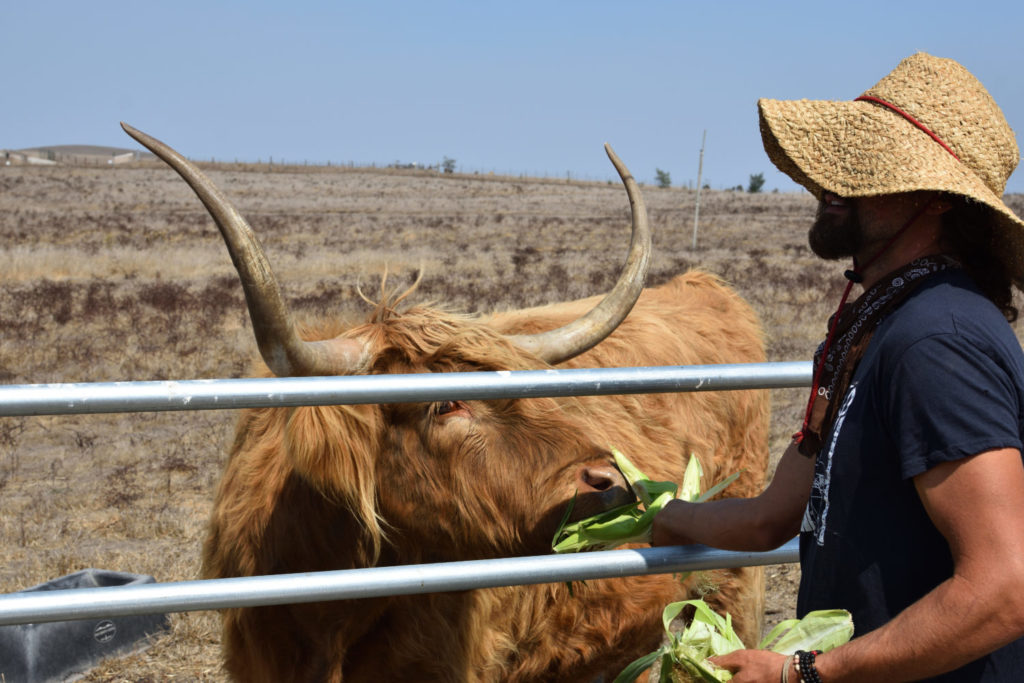
Daigle feeding Tony.
A lot of prep will go into keeping the soil pumping out heat in the future and in the offseason, they’ll run a cover crop that will go right back into the soil for next year. But the full biodiversity profile intended for the soil will take about four years to hit its stride, “and it is a truly healthy soil that creates a great immune system for the plants,” Keefer added. “So you can resist more pests, mold or bacterial issues.”
Before leaving Sonoma Hills, we asked the renowned chef and cannabis farmer about his goals and visions; what has he taken away from his transition after the heights he’s already reached in his career?
“I want people to understand that what they’re smoking isn’t the process or how it is cured. What they’re smoking is the life of the plant,” he replied. “Would you rather have your plant grown beside a freeway under lights inside, or would you like it outdoors in one of the most beautiful temperate parts of the country with not a single pesticide around, just farmland and ocean air?”
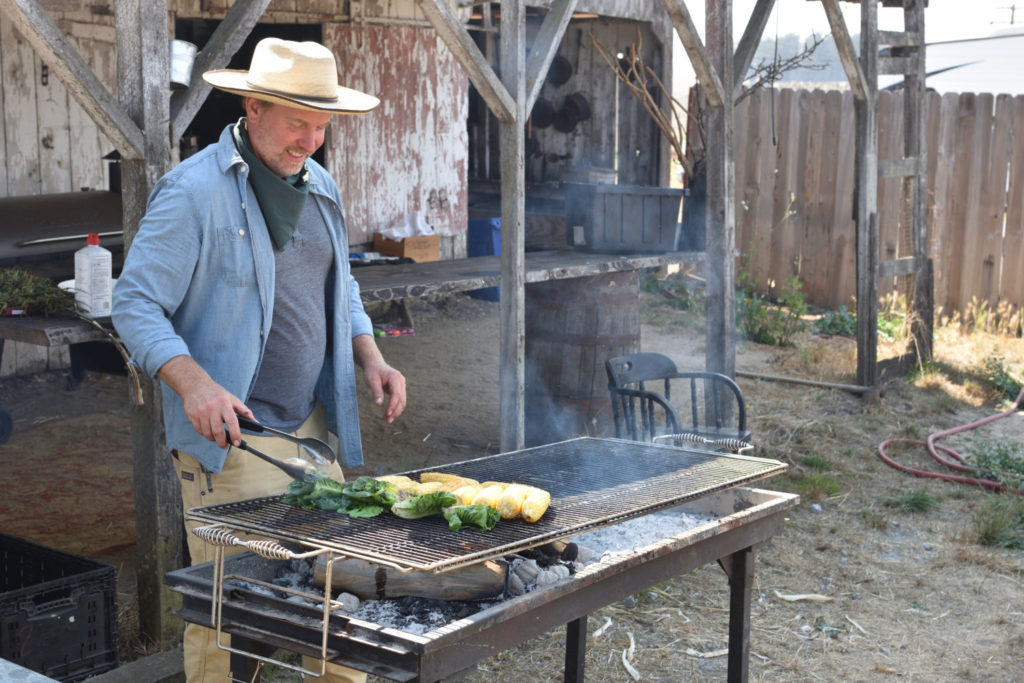
Lunch was crazy.
Expect to see Sonoma Hills Farm’s flowers on L.A. dispensary shelves later this fall. We’ll be sure to tell you where you can get your hands on them once the Croptober harvest hits.
Advertising disclosure: We may receive compensation for some of the links in our stories. Thank you for supporting LA Weekly and our advertisers.

